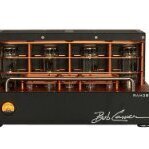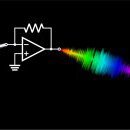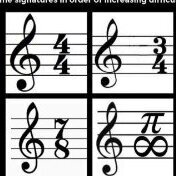Search the Community
Showing results for 'sonic holography' in topics.
-
Mp3s are great because they don’t take up as much memory as a vinyl or CD, making it possible to collect an amazing amount of music on one’s hard drive. But how is the necessary memory reduced? It is done by taking out information from the original CD recording, both sonic information and mathematical redundant information. In the end about 91% of the sonic information is removed. Shawn Phillips seen live Mp3/4 awesome
-
Sonic Youth PCH
-

Are Carver Pre-Amps worth purchasing
Skip replied to 19Joey81's topic in The Welcome Shop (Please read first)
From my experience with both the C-1 and my current C-19 w/ C-9 sonic hologram unit I have heard no drop off in base response at all. The holography seems to put bass and drums center stage. Both have excellent phono inputs, though I prefer the phono on the C-19. Tubes do make a noticeable difference even though I use Silver 9T monoblocks. -

Are Carver Pre-Amps worth purchasing
19Joey81 replied to 19Joey81's topic in The Welcome Shop (Please read first)
Thanks 'Barryg'future looks bright. On the C1 sonic Holography circuit- Is this an sound effect that can be turned off. Is this a 3D sound stage effect and how does this affect the base. Joey -

New Member with ALS Plat Mk IV's
Albikes replied to Albikes's topic in The Welcome Shop (Please read first)
Yep! I’ve had the audio fever since I was a teenager. First listening to my father’s JBL Paragon console speakers, then customizing sound systems in cars. There I loved my first good set of A/D/S 300i plate speakers. Oops, popped the woofers too many times. If only I had put that time, effort, and money into home listening way back then. Well, here I am now, having rebuilt the system starting way back in 2009. Here’s the description the seller had for the Plat MkIV’s: Moving must sell: A like new pair of completley restored, Carver Amazing Platinum Edition Mk IV, dipole woofer- ribbon loudspeakers. Featuring all new 12" OEM open panel design woofers (8 total), with flawless Carver 60" ribbon drivers (these Carver ribbons are the same 60" ribbon driver’s used in the Genesis Model 1.1 flagship speaker developed by the late Arnie Nudel, of Infinity IRS fame). This is a Light Oak finish pair, with all ribbon/woofer drivers tested & working perfectly. The original Carver Mk IV crossover's, have been upgraded, with superior quality components installed by former Carver Corp. head service tech. The upgrades include: new high grade electrolytic capacitors, coil inductors, resistors, and L pad trim level controller‘s replacing the original crossover components (24 total). I’m the original owner, having purchased new from Simpson Electronics, in Alexandria, LA. This speaker pair, originally shipped from Carver Corp. to Simpson Electronics, as the Platinum Mk III version, with the Mk IV crossovers purchased separately from Carver Corp, and installed by owner/seller after the speakers were received from above dealer (some minor parts changed by Bob Carver, for voicing improvements between the Mk III & Mk IV crossovers). The Mk IV crossovers, have been updated with new components, as specified above, during installation of new woofers. The replacement woofers, are the original Carver OEM spec, 12” open panel design woofers, sourced directly from Dynavox. And everything is in beautiful cosmetic and sonic condition! @PMAT Paul and I are looking forward to taking the grills off to inspect wiring and crossovers 😃 -
This BS&T album, side one, cut one, REALLY wakes sonic holography up. SH through out the two sides, with all the BS&T instrumentals - what a stage !
-
On the porch with Brain Bromberg and Urquell today watching my birds and my mind has turned yet again to auido. My thought son it change all the time, often depending on how cold the beer is. I remember my "beer snob" days when I never drank really cold beer because experts said it killed the flavor. Maybe, but now I am secure enough to drink beer the way I like it best -> very cold. ~~~~~~~~~ Audiophiles and people who consider themselves audiophiles claim dramatic difference in the sound of a tune when they change any component. 99% of the time if they paid $$, they claim improvement. They use the other 1% to show they are indeed an audiophile and not biased. Even small things like different wires and tubes are claimed to do wonders for a system. If you want to feel like an audiophile you can achieve that by just changing the wall cord and claiming the sound is to now "to die for". I am just an audionut and a "cold" beer drinker, so in a blind test, I often don't hear the difference, and if I do, is it a better? No matter, because if in a blind test 60% choose one over another after consentrated listening, is it a big deal? Swapping carts and tubes and wires and small things can break the audio bank and if in a blind test audiophiles cannot agree then - then WTF? I may have worded that wrong as very, very few "audiophiles" will sit in a blind test where credibility is at risk and now have developed endless reasons not to with help from the internet. In my opinion the best deal is to assemble the best quality "neutral" sounding system you can afford. That is not easy but with help from people here and other research, it can be done on many $$ levels. The main parts are player, amplifier, and speakers. You must have those. Spend your money there. Everything else in the system like preamps should be added with care and research as they can drag down the system. A neutral audio system is not the choice of all. It is not the choice of any audiophiles I know. "Neutral" would be the tune sounding just as it did to the person mixing it. No one hears that as systems are different. Even the same system at my house will sound different at yours. Who is to say the mixer got it right anyway? A case in point is the Beatles' 'LET IT BE". After several rejected remix attempts, Phil Spector was brought on board and the album has now sold a gazillion copies. In 2003 Paul McCartney remixed it. I have both and cannot say I prefer one over the other. I believe we could agree both these guys know more about music than do I (and maybe you?). The point is that unless you are at a live acoustic event, you hear a mix of what someone believes you will like. To that end, why can we not tweak it some ourselves? We do whether we want to or not as a CD will not sound the same in our car as in our house or through earbuds hooked to an ipod. Back to our original goal of a "neutral system" -> yep, that is not possible. It might not even be desirable, but I believe it is the goal to go for before we begin to tweak/personalize. The biggest tweak is speakers and then matching the proper amp. Once you have that, players are a big deal ( CD player, Turntable, Computer, etc). Players are a big deal and in most cases we want them to reproduce the infomation on the medium in a neutral or pure way. No one seems happy with a neutral system. Audiophiles (and even audionuts) soon want to tweak it. My first car was a 1963 VW Beetle, and one of the fun things was the incredible amount of aftermarket easy tweaks for sale to make it "yours" and make you feel special and part of it. Today in audio that seems to be the easy tweaks of wires, tubes, etc. I believe that other than making one feel special, they add little value to sound over soild (and less expensive) gear. If an item like this really does change the sound "dramatically", the drama is in your head or it is crap messing up your "neutral" system. One will claim the change good as they just layed out $$$, but ??? The best way to change sound is to experiment with speakers and amps and players. Once you get that together, if you want to mess with the sound (we all do) then look into Equalizers. They were a big deal before most reading this were born. I had one in the late 60s that had a ten foot spring for vibration. (I have been an audionut for a long time). An Equalizer can do more than any wires or tubes or etc. It can alter good speakers and amps to a huge degree. Is that a good thing? It can be fun. My friend TNRabbit said that if your Equalizer Graph is a smiley face - you have it wrong. Many things have Equalizer in some form. Bob Carver added them on many of his things. A tone control or his famous Sonic Holography are examples. Way back "when" all of us had a separate Equalizer in the rack if for no reason other than seeing the music dance. You don't see them much now, but if you want to mess with tunes - get one. If the person mixing the album can do it - why not you? If you are a "file" player, there are incredible options in software. In my opinion no digital file player on the market can compete with a well set up computer as they can't keep up. Those things are just computers and not as easy to change and update. Here are some free Equalizers for computer. https://sourceforge.net/projects/equalizerapo/ https://sourceforge.net/projects/pc-equalizer/ I use Isotope Ozone on my computer and have for years. If you think a NOS tube or $$$ interconnect can change things, this will blow your mind as to the endless possibilities.
-
So it sounds better than your AR? ray Not with my current speakers. I do like the Sonic hologram with other speakers that I have owned, but since that is not an option with SDA's... And the Audio Research, is the first preamp that I have owned that I can honestly say I prefer over my BillD C-1 or C-11. And I had to spend five times the amount of money that I sold that c14 in order to find what I considered a legitimate step up. The AR Trav has is super sweet. A lot more money. I have a great sounding Threshold Fet10 HL that is a step above a C1BillD as well. Its 3x the price of the BillD. Heard the new Bob Carver preamp will have a digital sonic hologram generator. Still in the works but sounds like a neat product. Tube preamp, digital SH.. SH without the noise?
-
New guy here, Hi I have been a Carver user since sometime before 1980, when I bought my C-4000 and M400a. I also now have a TFM-42 and TX-2. I liked the C-4000 so much that when my first one was stolen after less than a year, I took the insurance money and went and bought another without even looking at anything else. Although I love the C-4000, it is certainly showing its age. I have had to fix it several times over the past five years or so, and currently the delay board is out awaiting repair, and something has gone haywire in the TT amp. And if you've ever worked on one of these, you know they are mechanically not the easiest to take apart and put back together. So looking around this site, I'm thinking of trying something else. Maybe I'll try to get a used C-1 and rework it. That seems to be a popular one here, and looks much simpler to work on. And I for one sometimes really enjoy the sonic holography, even though I know that opinion is not shared universally. So signing up to do some further research and share my experiences. Cheers and good sound.
-
Sonic Youth Superstar
-
It may have been used before but the sonic holography effect and the guitar riff from "The Ballad of Bill Hubbard" by Roger Waters on the 'Amused to Death' album is spectacular. It is one of the songs I use to test my ribbons for buzz and I was led to it by several members on this site (UM, PMAT, etc.). The dog barks can be heard coming from behind you with SH! (along with the cougar growl) Just a consideration.
-

New guy just saying hello :-)
aslan7 replied to Carsten's topic in The Welcome Shop (Please read first)
Hey Carsten, soooo glad you found us (from Denmark no less!)...and a warm welcome to the CarverSite. You have stumbled upon an amazing site as well as one of the best speakers ever produced, and with a little knowledge from the folks here, you will be able to enjoy them to their fullest. I too own a pair of AL's (silver model) and that was the foundation with which I built my system around. They have been singin' sweetly since 1990. I did have a ribbon begin to buzz but we have a member here (SEA) who can help with that. ( AL ribbon repair ) Thank you for posting a pic so fast too! I look at that picture like an artist looks at a blank canvas. You have so many options to begin building a system around those fantastic works of art. You are very fortunate. What horsepower will you be using and have you discovered sonic holography? Btw, we love ALL things audio (& vid) here with a passion of course for Carver related. Ask away-- and again, welcome aboard the carver express! -

Carver C-1 Pre-amp issues
nwinjim replied to nwinjim's topic in The Welcome Shop (Please read first)
Many thanks to all those who have responded both privately and publicly. The multiple suggestions to purchase a can of Deoxit and use it to clean affected areas will be heeded SOON. There seems to be a universal consensus that this is most likely the problem. If this does not work, then my fallback will be to have it repaired by Jim in Rockford. I purchased my Carver components in 1981 (35 years ago), when I obtained my first "real good job" as a young man. There was a small boutique audio business nearby affiliated with Valparaiso University, Audio Junction (closed many years ago), where I learned about the Carver brand, as well as many others. I treated myself with a purchase of a top line Bang and Olufsen turntable, and Carver C-1 pre-amp, Carver TX-11 tuner and Carver M1.5-t amplifier. As a young man, I was totally smitten with sonic holography and Bob Carver's ingenuity. I'm really glad to have found this site, and looking forward to re-kindling my relationship with Carver. -

Are Carver Pre-Amps worth purchasing
Ar9Jim replied to 19Joey81's topic in The Welcome Shop (Please read first)
Welcome Joey. Glad to have you here. I have had the C1 and 4000T Carver preamps and enjoy them. The C1 is much easier to service and the BillD mods take it to another level from stock. As far as sonic performance it is a good value. Like Old Texas Dog was saying, you will need to spend around $1500 for a vintage pre that will show an improvement over a BillD. The Sonic Hologram is a sound effect but it is based in science and is interesting to read about when you have time. Many of us are hooked on it and can't live without it. SH can be turned on and off at will. -
A week ago, Lady Gaga released her fifth album, "Joanne," which has a stripped-down sound that is quite different from her previous efforts. She has promoted the album with performances at small night clubs and dive bars, a coming home of sorts to the days when a young Stefani Joanne Angelina Germanotta would tear up a West Village bar with nothing but her voice and a piano. Beyond Gaga's performances, what’s unique about "Joanne" is how some of the songs were made. When she announced earlier this year that she was recording an album with the producer Mark Ronson, the press began calling it her analog album. What’s an analog album? Since the late nineteen-nineties, when Pro Tools recording software became widely accepted, the vast majority of music has been recorded digitally onto computer hard drives. The advantages of digital recording are obvious: Pro Tools allows for endless editing and manipulation of sound, from pitch-correcting vocals to splicing up ten takes of a song into one seamless track. Cheaper versions of the software let amateurs record in their homes, which makes music accessible to many more people. Pro Tools also helped create new genres, like modern electronic dance music, mashups, or the stripped backbeat that powers much of today’s hip-hop, by artists like Drake. Analog preceded this. It is music recorded on reel-to-reel tape machines. The only way to edit tape is by slicing it with a razor and attaching it to another piece of the tape, an irreversible process that restricts after-the-fact manipulation. Despite these limitations, over the past several years, a number of musicians, from well-known pop stars to young independents, have begun seeking out studios, producers, and engineers who have the skills to record albums with the tools of the pre-digital era. Early advocates included Gillian Welch and the Foo Fighters (whose 2012 Grammy-winning album, "Wasting Light," was recorded on vintage equipment in the lead singer Dave Grohl’s garage), as well as analog’s high priest, Jack White, whose Third Man Records not only produces albums in White’s analog studio but regularly records concerts live to vinyl masters, which they press and distribute. This return to analog (which mirrors the revival of vinyl records) may have begun with rock and indie albums, but it is increasingly found across genres. Recent analog albums include work by the neo-soul star D’Angelo, the Wu-Tang veteran Ghostface Killah, Ryan Adams, the Black Keys, and Arcade Fire. "Joanne" is not completely analog, but “at least three songs were recorded to tape,” according to Mark Ronson’s manager. The reasons that musicians record on outdated, archaic, and less flexible equipment are, in some sense, surprising. The assumption is that they want to capture a certain audible sound quality—the oft-mentioned warmth of a tape recording. This is a factor, but is not as significant as people tend to assume. Today’s professional digital recordings offer a sonic quality that only the most discerning audiophiles can distinguish from its analog equivalent, and today most people consume music through tiny headphones, regardless of how the album was originally recorded. “I think the sound quality is one of the smaller reasons why people chose analog,” Chris Mara, who owns a Nashville analog recording studio called Welcome to 1979, said. Mara, an experienced recording engineer, opened the studio eight years ago in a former record-pressing plant, and his business had doubled pretty much every year since. The bands and musicians who seek him out—as well as a growing cluster of other producers who have sprung up around Nashville—tend to be younger and are looking back in time to get away from the heavily manipulated, overly polished sonic atmosphere of modern pop. These musicians want their albums to sound like those made by Led Zeppelin, Sam Cooke, and Bruce Springsteen—not Justin Bieber. By recording like the legends of the twentieth century, they hope to create something new. Another analog studio engineer in Nashville summed it up in simpler terms: “The old shit’s the best shit.” For Mara, the power and flexibility of Pro Tools—with its limitless edits, corrections, and effects—has drawbacks, particularly because it brings with it the endless potential for distraction. “When I’m recording in digital, I’m constantly futzing with reverb and other variables on the computer,” he told me when I visited his wood-panelled studio two years ago to speak with him for my book "The Revenge of Analog." “Where with analog, I turn the vocals up and it’s there," he said. "The music just reacts to the tape.” Recording in an analog studio demands more from musicians. After each take, the band, engineers, and producer decide whether what they just recorded was the best version, or whether they should record the whole thing over again. Because of the time and cost involved, Mara said that analog recording sessions tend to be more tightly controlled. Decisions have to be made as the session moves along because mistakes cannot simply be fixed in post-production. “People think limitations are a bad thing,” he said, “but it moves the process forward in a good way. You can easily get lost in the process. It’s easier to stick to the plan when you have limitations.” Sound effects and editing are possible, but they require significant effort, and are used sparingly. Welcome to 1979 has an echo chamber, which is a long concrete hallway with a microphone at one end. Reverb is achieved by playing the music back through a door-size vibrating metal plate that weighs hundreds of pounds. On Pro Tools, both of these effects can be achieved with a few clicks of the mouse, which means they’re deployed all too frequently, along with other plugins, like Auto-Tune and beat correction. Scott McEwen, another analog recording engineer in Nashville, who owns the studio Fry’s Pharmacy, suggested that Pro Tools makes musicians lazy. They settle for a decent take, he said, safe in the knowledge that it can be fixed later. “With tape you just have to man up and do it. It instantly makes you play better. It makes your blood boil in a good way. It makes you nervous.” Just as the choice of technology ultimately influences the way a record sounds, it also shapes any kind of work. By making certain things easier, and offering limitless options, software can be simultaneously liberating and paralyzing. Sometimes the least efficient option, such as paper and pen, leads to better results, or at least uniquely imperfect ones. Ken Scott, a legendary recording engineer who crafted the sound of the Beatles, as well as David Bowie and Pink Floyd, told me that the iconic albums he worked on were all the products of the happy accidents that the analog process imposed—mistakes, screwups, and forced improvisations of the type that can be instantly corrected today in the studio. “We humans cannot achieve perfection,” Scott said. All we can do is embrace our best, imperfect efforts, and move on.
-
Greetings to all, and welcome to my introductory thread! I used to sell Carver back in the 80s, but oddly I don't remember a thing about it, other than I always wanted to have some myself but always got distracted by other stuff like Nakamichi or Sumo. I recently, suddenly, very quickly - and a few other adverbs may apply - acquired a bunch of Carver stuff in seperate* buys. I'm the proud owner of the following: TFM-25 M1.0t PM-900 MXR-130 CT-3 I've tried the first two amps out so far, and had good results with a range of different preamps before settling on a Nak 7A, sourced with a Marantz SACD player and driving various speakers. I'm currently on the TFM-25 but I switch back and forth on random occasions. Either amp certainly plays better than the old Hafler I had in there, which sounded like a box full of mud compared to the Carvers. They're very clear and strong, surprising for amps of that age. I figured the smoke demons would get released as soon as I plugged them in but they've been doing great. The amps, not the smoke demons. The PM-900 is DOA, but I'm eventually going to get around to repairing it after I find out how. I know the circuits inside are quite a bit more involved than the simple Class AB amps I've messed with prior to this. And by "messed with" I mean "tried not to spill my drink inside while I looked at them with the cover off". The other two I haven't messed with yet. I always wanted a "The Receiver" when I was early in the business so I was happy to get the MXR-130. I think it would be great driving a couple of bookshelf speakers for my workshop. The CT-3 I know close to nothing about, except that it's black, its lightweight, and thats about it. If I keep the TFM-25, maybe I'll put them together with some old B&Ws or whatever I happen to have around. Stuff I'd like to get: a few M400t - they remind me of the old NeXT Cube, and I understand they're pretty good amp, coincidentally M1.5t - because you always need more power maybe a C9 Sonic Hologram? Is there a point to that anymore? If anyone has opinions about the gear collection as it sits, or can offer advice on capabilities, trouble spots, mods, please let me know. *intentional mispelling** ** so was that
-

I just landed in the Carver patch...
Brian_at_HHH replied to Butcher's topic in The Welcome Shop (Please read first)
Welcome @Butcher - nothing like diving into the Carver wonderland with both feet! That's quite the short term OCCD collection of gear. I'd warn you of the addictive nature of collecting Carver gear, but, um, well, methinks it a we bit too late for you - you'l fit in great! I do love your analogy to the NeXT cubes - I dare say they were also pretty tightly packed inside. If, unlike Yours Truly, you know which which end of a multi meter probe goes forward, there are lots o folks here who can help guide you through the PM-900. The SH is definitely still a valid unit, both from the purest sense, where you are trying to achieve the absolute sonic hologram effect, and for the overall effect it can have on sound (I' sure 'll get arguments on that, but I do't care - I never turn mine off, aside from a couple of tracks I've found that it somehow interacts badly on). Many of the preamps will already include it, or there are separate units like the C-9, as you noted. -
so my last post was about my ct-17 not working. ill try and do a recap in the future but for now i found a c-11. seller said everything worked great, but when i turn it on, the volume is low for about 30 seconds until something warms up. then it makes a few crackles and kicks in and sound gets normal and sounds great. also, if sonic holography is on i only get sound from the right side. also a little disappointed that the black is different than my other components, but still better than silver. so anyway with those issues aside and figuring out how to adjust the speed on the denon turntable it sounds amazing! here a few pics and a video. i found that cart which was rusty and crusty out with someones trash last week! video: oh, and thanks to this forum, i got a new belt and easily installed it so my cd player opens a closes again! I ordered couple extra so as a thank you, if any members break a belt, message me and ill send you one for free
-

got my system together, sounding good!
Vin replied to Vin's topic in The Welcome Shop (Please read first)
Same but black. And I think the sonic holography was updated. -
Great to hear you got it fixed! I think Dr. Z uses his phone and an RCA headphone jack to dual RCA with some tone generation software. You set the freq for 1KHz and adjust the meters for 100W indication. Correct me if I am wrong Dr. Z......grin A cell phone with a test tone app is just one of many ways to generate the 1kHz test tone. When Zack is home I use Audio Test Bench software on his laptop to generate the 1kHz tone. More recently I used an mp3 player loaded with track 4 of the Carver Sonic Holography test disc. Irregardless, I run the test tones into the preamp aux inputs, and adjust gain to provide a 1v output. For an M-500t I adjust the meter calibration pots (SRV601/602) until the meters read 100w.
-
Sonic Youth Bull In The Heather
-
I like the idea! Maybe dedicate disc 2 to sonic holography favorites, you know the ones that give you the wow feeling! BarryG
-
Welcome to the site, and yes, you will find just what you need in the way of advice for these issues. Thing is, there are few things that can cause the issue mentioned. Cleaning the controls is a good start, and now you can also eliminate circuitry by switching out the tone controls, sonic holography, and even the rumble filter located on the back panel. Having done this will allow you to determine the possible offending circuit. Keep us posted, and if you get a chance, there some situations that photos are helpful.
-
B-Man, First, I have no test equipment. My evaluations are purely subjective. That is, 'does it sound better to me?' after living with a configuration for a multitude of listening sessions. I was discussing subjective evaluations with a friend that is an electrical engineer earlier today and my friend Randy told me "I [Randy] pursued electrical engineering because of my [Randy] love of audio, and that proves there is more that we don't know than what we do know with regards to measuring electrical systems". My asserted capacitance values are based upon calculations which can be found in "Harry E. Green, A Simplified Derivation of the Capacitance of a Two-Wire Transmission Line, IEEE Transactions on Microwave Theory and Techniques, Vol. 47, No. 3, March 1999, p. 365-366" and online calculators. A couple of such quick calculators can be found at the links below: http://www.ampbooks.com/home/amplifier-calculators/wire-capacitance/ http://www.cirris.com/learning-center/calculators/174-cable-capacitance-calculator I have used both and prefer the first one because it is the quickest and easiest. And, if someone believes that I am being less than 'scientific', so be it, it's my listening pleasure and fun that is my highest priority. My first two configurations had a high degree of hum and another suffered from noise. I addressed hum with distance separation and ordering of the conductors, and adding a single twist around my two inch cotton core. That caused all of the conductors to cross each other in a perpendicular manner a single time between the turntable and the preamp. The left and right hot wires were at the farthest distance from each other which gave them an 8 cm separation. The associated commons were in the middle and separated by 2cm from each other and their associated hot wires. The end result was an honest consistent 180 degree sonic image which also had greater depth than I had ever heard before without the sonic hologram. This also greatly enhanced the sonic hologram. I should also add that I also use cotton dielectric interconnects between my preamp and power amps. I use the M400t's in a passive bi-amp configuration. Just stereo here. Concerning noise, I was able to eliminate non-ambient, external EMI and RFI noise, and noticeably reduce ambient noise using an old trick I call a "Magic Brick". I can not take credit for the Magic Brick because I first read about this in an 'Absolute Sound' product review back around 1980 or so. However, I can claim some credit for my version of the Magic Brick (a picture of one will be inserted below). Don't laugh or guffaw until you try this and live with it for a period of time. My Magic Brick is nothing more than a cigar box packed full of ransom sized ferromagnetic objects, antenna ground wires of random lengths and twists, and pennies all wrapped in copper foil, and placed above power transformers and any large inductors. Except of course speakers. I also use numerous power cord ferrites on all power cords. I do not believe that any one of these tricks, other than the interconnects and my handcrafted speaker cables makes a huge difference. I believe that all of these things in conjunction with some tricks combined makes the improvements. That being said, don't expect that just adding power cord ferrites, or changing one set of interconnects will yield the results I have experienced. I often times think I have been lucky and have also wondered what sort of mileage other may get? Two Magic Bricks setting atop M400t's My choice of cotton as my dielectric/insulation is because I needed a substrate to keep all wires uniform. I chose not to use any other materials because I wanted to eliminate all dielectric absorption that was possible. That is why I do not use Teflon, polyolefin, TechFlex, or worst of all, PVC and stranded wires. The only foreign material is a wee tiny bit of Kester 60/40 solder in the smallest amount. The 30 AWG wire shows through the solder joint.
-
"I thought it sounded great. Bose turned up at my base in england " That's a great story Hambone. Don't apologize...we enjoy folk's audio journeys throughout the years. Were you based at Mildenhall or Lakenheath? I have flown out of those bases more times than I can count. So great to have you here. And yes, that sonic holography is still amazing to this day!









